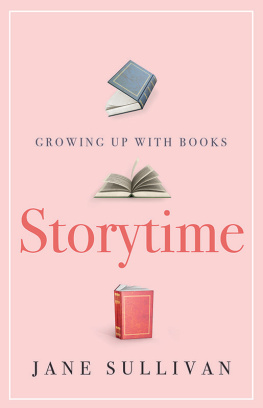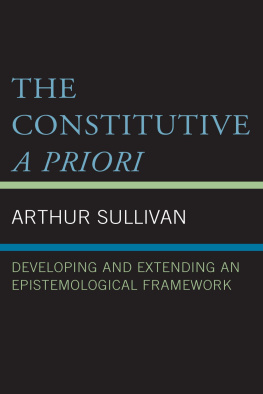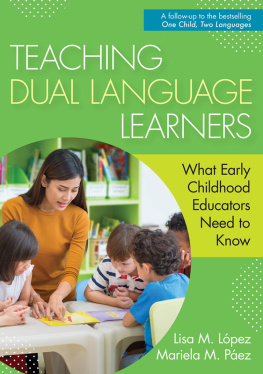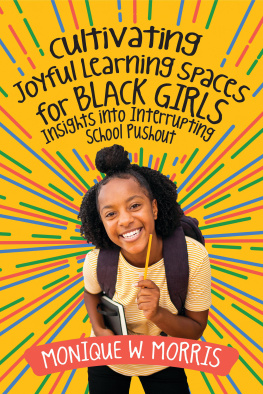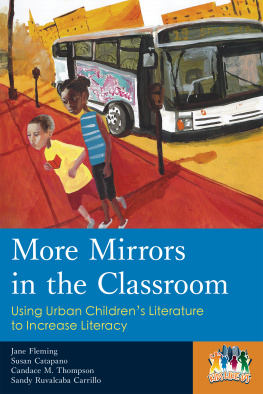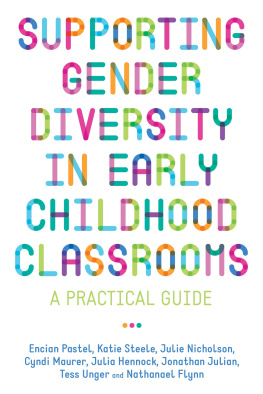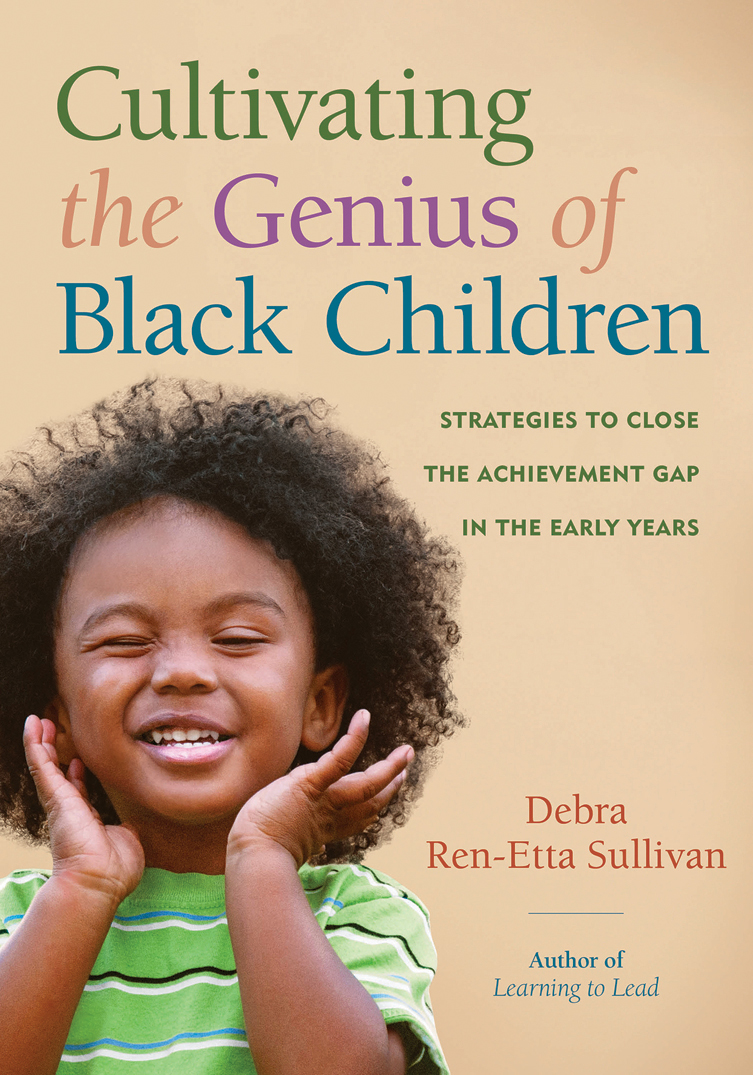
Published by Redleaf Press
10 Yorkton Court
St. Paul, MN 55117
www.redleafpress.org
2016 by Debra Ren-Etta Sullivan
All rights reserved. Unless otherwise noted on a specific page, no portion of this publication may be reproduced or transmitted in any form or by any means, electronic or mechanical, including photocopying, recording, or capturing on any information storage and retrieval system, without permission in writing from the publisher, except by a reviewer, who may quote brief passages in a critical article or review to be printed in a magazine or newspaper, or electronically transmitted on radio, television, or the Internet.
First edition 2016
Cover design by Erin Kirk New
Cover and interior photographs by Jarkoris R. Scroggins
Interior design by Wendy Holdman
Typeset in Dante Std. and Myriad Pro.
Library of Congress Cataloging-in-Publication Data
Names: Sullivan, Debra Ren-Etta, author.
Title: Cultivating the genius of black children : strategies to close the achievement gap in the early years / Debra Ren-Etta Sullivan.
Description: First edition. | St. Paul, MN : Redleaf Press, 2016. | Includes bibliographical references and index.
Identifiers: LCCN 2015036080 | ISBN 9781605544069 (ebook)
Subjects: LCSH: African AmericansEducation (Early childhood) | African American childrenEducation. | Early childhood educationSocial aspectsUnited States. | Academic achievementSocial aspectsUnited States. | BISAC: EDUCATION / Preschool & Kindergarten. | EDUCATION / Multicultural Education. | EDUCATION / Philosophy & Social Aspects. | EDUCATION / Teaching Methods & Materials / General.
Classification: LCC LC2765 .S85 2016 | DDC 371.829/96073--dc23
This book is dedicated to all Black children and the wonderful ways they light up our classrooms and add sparkling energy to our days!
Table of Contents
Guide
Contents
Acknowledgments
Many, many thanks to Kyra Ostendorf and David Heath, my Redleaf team who got me started on this journey! Those early meetings really helped give shape to my ideas. Thanks also to Sara Wise for taking my millions of ideas and giving them structure! Thank you, Siobhan and Porter, for encouraging me to keep writing and for reminding me of your own early learning experiences. I also want to acknowledge Jarkoris R. Scroggins and the wonderful pictures he captured of my grandson, Aaron Michael-Scott Sullivan. Every time I see that face, I am reminded how critical it is to constantly cultivate the genius of Black children.
B LACK CHILDREN ARE GENIUSES just waiting to show the world their exceptional intellectual ability, creativity, and originality. Of course, most children are geniuses and they are so excited to go to school. They cant wait to begin learning all of those wonderful things theyve been dying to know. Their smiles are big, and either their little bodies cant keep still because there is so much to see and do and say or they sit perfectly still, not moving a musclejust in case the mere act of breathing causes them to miss something. That was my daughter, Siobhan.
I will never forget her first day of kindergarten. Siobhan had loved preschool, but she was even more excited about starting kindergarten at the big kids school. She had been in the building numerous times because her two older brothers went there and I was on the School Commission. I pulled up to the curb and opened the car door for her. She jumped out, yelled, Bye, Mom!, and took off running into the building. I stood there, alone, with my arms outstretched and my lips puckeredwaiting to accept that traditional, first-day-of-school goodbye hug and kiss. I went to her classroom to say good-bye. There she sat, at the table where her picture was taped, wearing a grin so big I thought her cheeks would explode. She sat straight and tall with her hands folded on the tablewaiting. Let the learning commence!
That is how most Black children begin. They know something wonderful is about to happen and they bring with them an insatiable curiosity about the world around them, an unwavering focus on things that capture their interest, and an expectation that all the answers to their unlimited questions will be revealedon the very first day! Just like most of us, Black children gravitate naturally toward interesting and intriguing activities and topics presented in ways that draw on natural learning instincts and preferences. So if all children are geniuses, you may be asking why this book focuses on the genius of Black children in particular.
It is our responsibility as educators to capture the interest of Black children and cultivate the natural genius they bring to our classrooms, but as our population continues to diversify, I often find that teachers are overwhelmed trying to incorporate the learning needs of so many children into the classroom experience. The challenge for many teachers is that the children in their classrooms represent many races, ethnicities, cultures, and languagessometimes as many as fifteen different language groups in one classroom. In Seattle, children from the Horn of Africa alone (for example, Ethiopia, Somalia, Eritrea, and Djibouti) represent the second-largest group of dual-language learners in the public schools. Many teachers cant imagine what it would take to create a classroom that addresses the needs of such a diverse population. They commonly respond to the situation by saying, I dont even know where to begin, and then stay with the teaching methods and strategies that are most familiar to them. Unfortunately, this means many childrens learning needs and preferences will go unmet. When Im coaching or mentoring teachers, I encourage them to address this challenge by starting with just one culture. Tackling fifteen cultures at once can seem daunting, but anyone can take on just one.
I started with just one culturemy own. (After all, most people know their own culture best.) I first examined research (both historical and contemporary) on Black learning styles and the cultural socialization that informs many Black childrens expectations in their learning environments. I then began providing professional development and training on the learning needs and preferences of children of African descent to early childhood teachers whose classrooms consisted primarily of Black children. In 2011, I worked with several teachers over the course of one school year to transform their classrooms by increasing the teaching strategies, methods, and approaches they used to include more of the elements Black children might expect.
Including these elements is important because, just like my daughter, most Black children enter learning environments thinking of education as something that belongs to them and they see themselves as active participants in their education. For example, many children begin school trying to answer every question, touch every item, and share every experience. I think they are pretty sure the teachers main job is to answer all their questions, hear everything the children have to say about the subject, and provide wonderful, exciting, interesting items to explore.
But by third grade, much of Black childrens natural exuberance has been replaced by frustration and resignation. They begin to see education as belonging to the teacher, as what the teacher does in her or his classroom. Children develop this attitude when the teacher repeatedly stops them from talking and moving, limits what they can touch and examine, and requires them to be still and listen to the teacher talk. Many children become bored, and children who are bored and unengaged in school may look for something else to do. I see the same result when grown-ups are bored or unengaged in trainings. I see adults standing, pacing, tapping, knitting, talking, texting, and scrolling through screens on laptops, phones, and tablets. Grown-ups rarely get in trouble for such behavior, but children often do. When teachers have a stronger sense of what is needed by the learners in the room, they will be better equipped to engage those learners.


